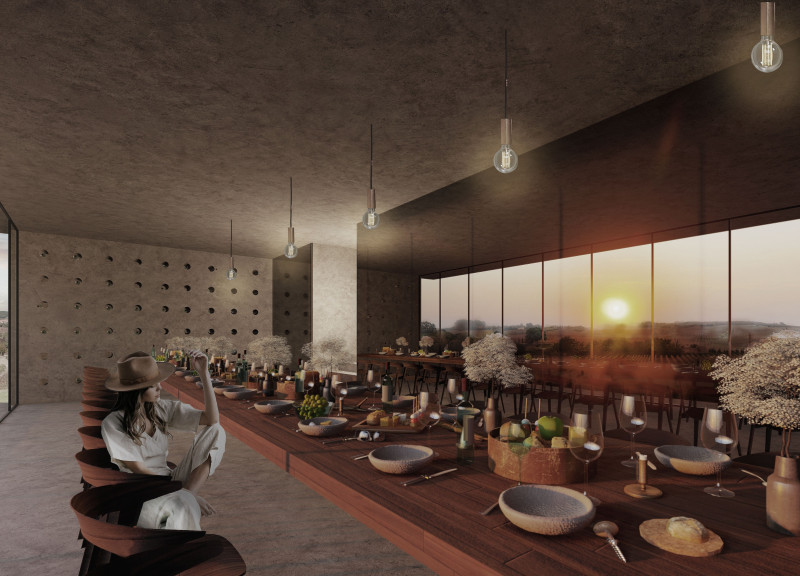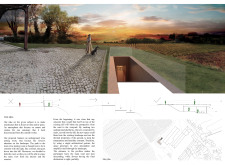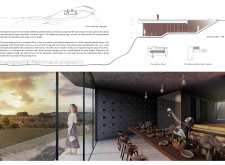5 key facts about this project
The Hill is a wine tasting pavilion designed to blend with its natural surroundings. Situated in a scenic landscape, the structure serves as a retreat where visitors can engage with nature while enjoying local wines. The concept centers around creating a space that feels like it exists outside of time. This connection to the environment is a fundamental aspect of the design, creating an atmosphere that encourages relaxation and contemplation.
Architecture Concept
The main feature of The Hill is an underground wine tasting room that highlights the beauty of the landscape. Visitors access the space via a pathway designed to resemble a tunnel, which descends into the hill. This journey intensifies the experience, shifting focus from the outside world to the internal environment. The descent also plays with light, creating contrasting experiences as visitors move through the space.
Spatial Organization
The layout of The Hill includes two underground platforms connected by stairs. These stairs are carved directly into the hillside, allowing the building to merge into its setting. This thoughtful design helps maintain the natural topography, minimizing disruption to the view. By utilizing the thermal properties of the earth, the pavilion can provide stable temperature and humidity, both of which are important for wine storage and tasting.
Materiality and Environment
Concrete has been used in the construction of the walls within the main tasting room. This choice of material is significant, as it serves both structural and aesthetic purposes. The concrete walls create an enduring physical space, while also enabling reflections that connect the interior with the surroundings. The main tasting area faces west, allowing for expansive views of the vineyard and the sunset, further enhancing the visitor experience.
Visitor Experience
The design encourages movement throughout the pavilion, with the main tunnel acting as the primary circulation route. Practical spaces, such as restrooms and storage, are situated at a lower elevation to minimize their impact on the tasting experience. This organization helps visitors stay focused on the main attractions, while also ensuring that necessary amenities are conveniently accessible.
Inside the tasting room, reflective surfaces enhance the connection between the environment and the space. These design elements invite visitors to engage thoughtfully with both their wine and the landscape outside. The overall experience is one of immersion, where nature and architecture come together to create a moment of quiet appreciation.






















































